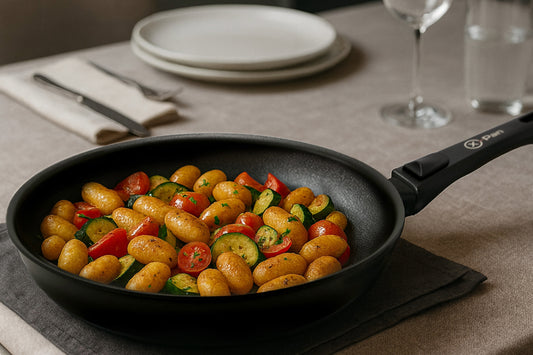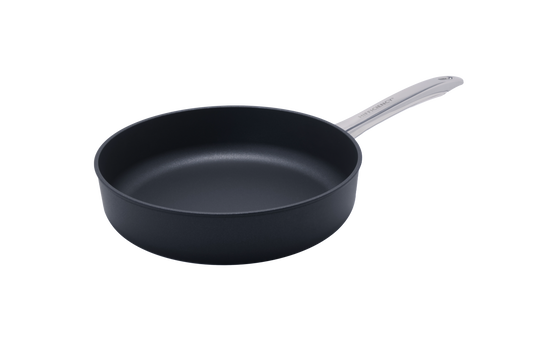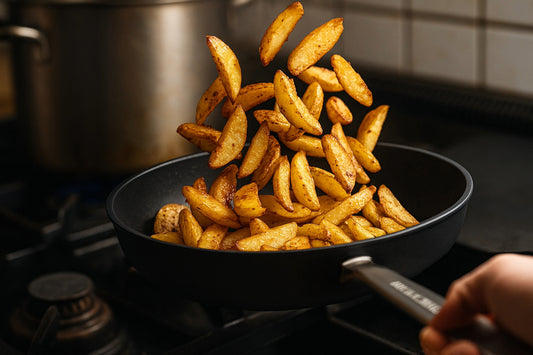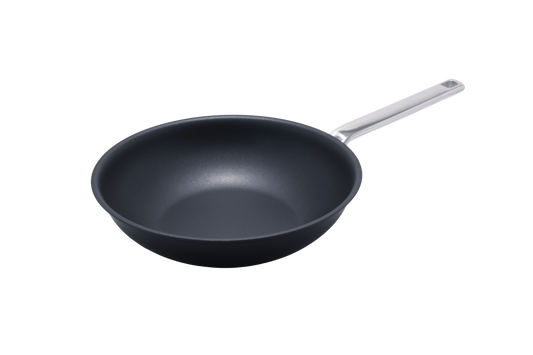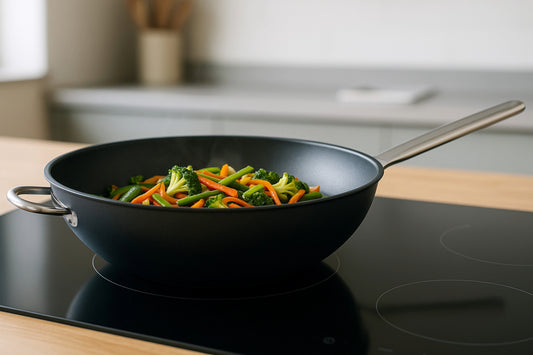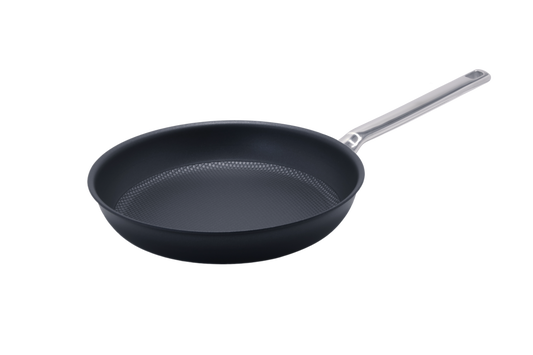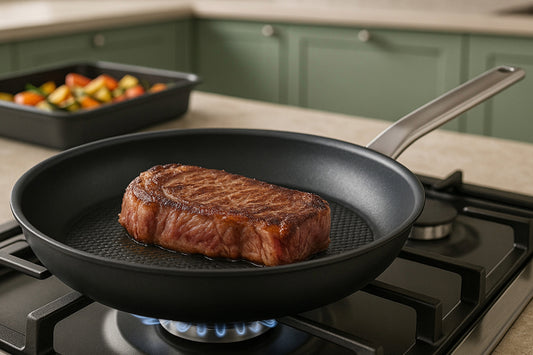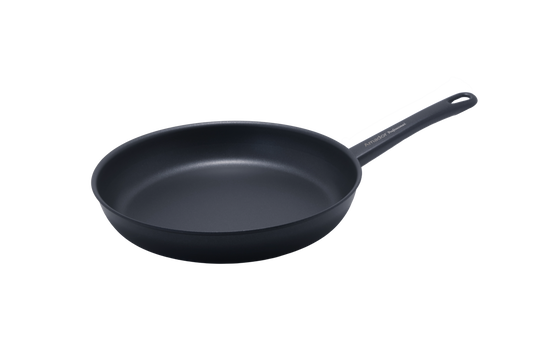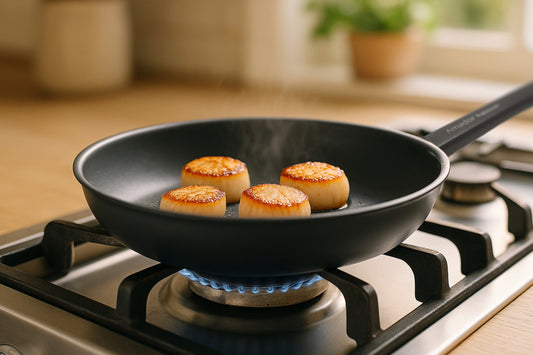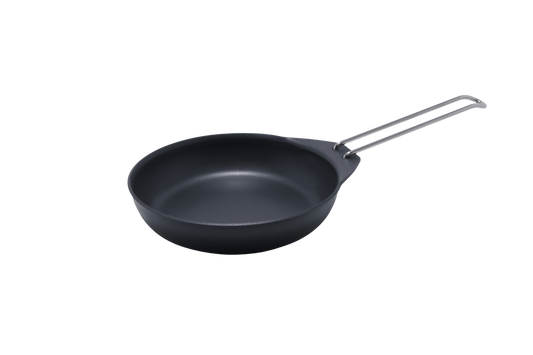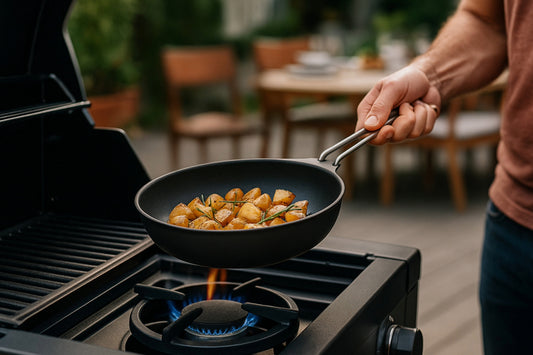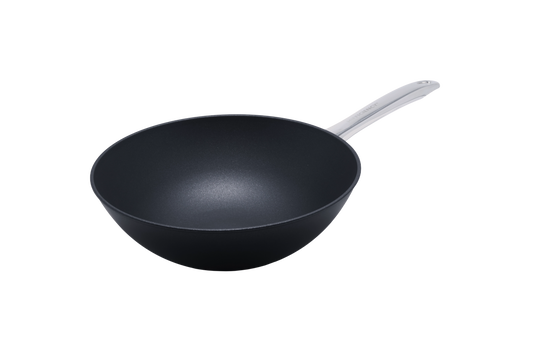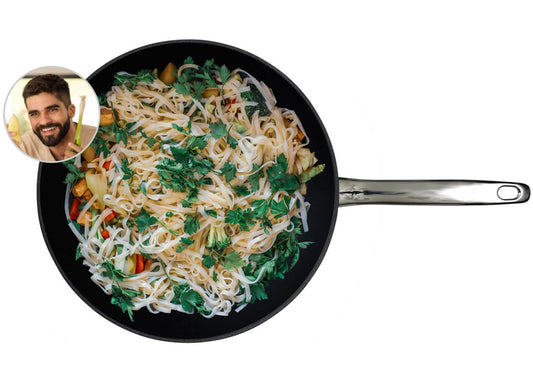

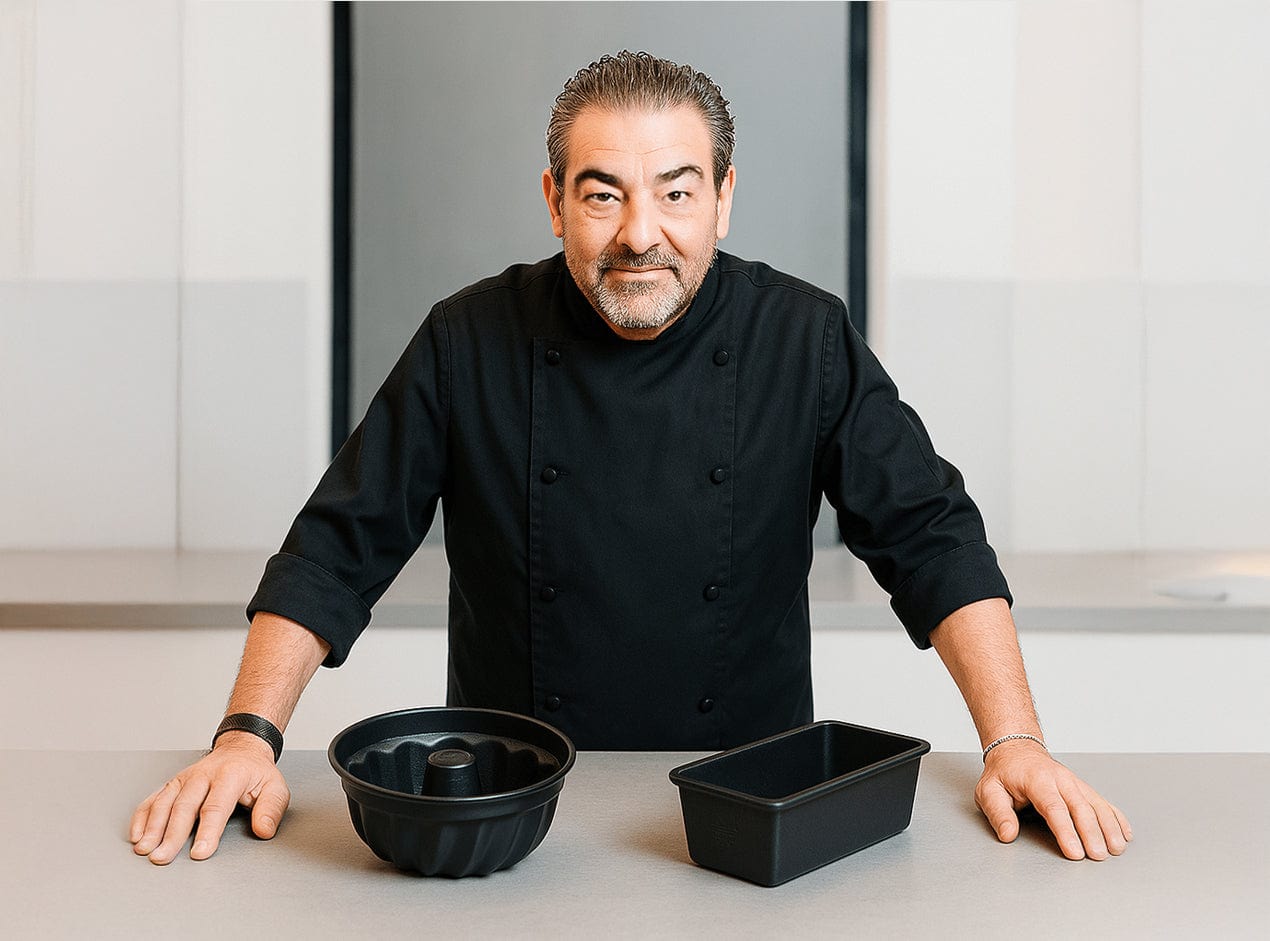
Pan review
Which pan is the best and why?
Especially when it comes to frying pans, there seems to be an overwhelming number of different products, all advertised with world-class hype. How are you supposed to keep track of them all? Why spend more money on a frying pan when you can buy them for as little as €2.00 in some furniture stores? What's so difficult (and expensive) about making a good frying pan? How can consumers recognize a high-quality product?
How well a dish turns out depends on many things, of course. First, you need good ingredients, ideally produced in an environmentally friendly way and with respect for animal welfare. The preparation then depends on the recipe, the skill of the cook, and also on the quality and properties of the cooking and baking equipment used, such as the pan, pot, cake tin, and so on.
The pan "tip test"
To achieve even heat distribution on an electric stove (this isn't quite as critical on a gas stove), a pan should rest with as little or no gap as possible. If it wobbles when cold, it won't do the job. Place the pan on a flat surface, grasp it at opposite edges, and try to make it wobble. If it wobbles, the pan isn't very good.
The next step is the wobble test at operating temperature after rapid heating. The most common pan temperature is around 200°C, which is quite high. And at 200°C, aluminum is already quite soft. Metals have the property of expanding thermally when heated. This means they can warp. So, perform the test as described above with the hot pan. But please be careful not to burn your fingers. The pan should remain stable and absolutely not exhibit any negative indentation, meaning a downward bulge or dent. If the pan is no longer stable, this can be very dangerous and, of course, also prevents even heat distribution.
Cheap, low-quality pans, which might pass the initial wobble test reasonably well, warp so badly after just one heating that they wobble and no longer sit firmly on the surface. Good pans pass a test where they are rapidly heated to 250°C 50 times and then quenched in cold water. After this, they should retain their original shape as much as possible.
bottom curvature of the pan
The curvature of the base is more difficult to measure, for example, using a tripod with a dial gauge. This involves measuring the curvature (indentation) of the empty pan while it is heated. The better the pan, the smaller the curvature or indentation when cold. It should not exceed 0.6 mm and must never be negative. When the pan is heated, this indentation should not increase significantly or become negative. However, be aware that most pans will experience a reduction of several millimeters in this test. So don't be surprised if oil or a fried egg slides to the sides. After heating, the pan should return to its original shape, but this usually doesn't happen. Steel or cast aluminum pans that perform well in this test are generally quite heavy, weighing 2 kg or more. A special case are high-efficiency pans with a special base made of the new multi-layer material "MultiSpeedMetal®". These pans do not warp but weigh only about one kilogram.
The "cracking test"
Some basic induction pans made of aluminum with a brazed steel base crack when first heated. This is because the bond between the aluminum and steel loosens due to their different rates of thermal expansion. A loose bond is no longer secure and therefore no longer transfers heat evenly. If you have a pan with cold spots, this is because the base has partially detached.
Leakage test or "hovercraft"
Aluminum pans with a steel overlay for induction cooktop compatibility can be identified by the holes in the steel base through which the aluminum of the pan body is visible. Immerse the pan in water, dry it, and heat it on the stovetop. If it sizzles and steams, the connection is faulty and not airtight. In extreme cases, the pan will move around on the stovetop like a hovercraft on water.
What makes a frying pan special?
These were some basic, simple tests before even considering cooking performance. When cooking, other characteristics also come into play. How does the pan feel in the hand? Is it easy to tilt? Is the handle sturdy? Is the shape such that the contents can be turned by tilting? Personal preferences vary considerably depending on the cook's size and strength.
Most cooks aren't thrilled if the pan isn't very stable or if the handle wobbles. And if you're working in the kitchen for several hours, it's also not pleasant if the pan is too heavy. Furthermore, if it heats up very slowly, it wastes time and makes it difficult to set the right temperature. The better the cook, the more easily they can achieve the perfect doneness. For this, quick and easy temperature control is crucial.
Ideally, a pan would be super stable, not warp, heat up quickly, and provide even heat distribution. It should also be as lightweight as possible and dishwasher-safe. Ideally, nothing should stick, even without much oil, and meat should brown well. And it should be healthy, meaning no PFOA, and preferably no PTFE either, because toxic acids are produced during manufacturing, and also at excessively high temperatures. At this point, it should be clear why there are so many different pans available, although you can essentially eliminate all those that fail the initial tests. And unfortunately, that's practically all the cheap and mid-priced pans.
Fry like a pro
And what does the 3-star chef say about his Amador pan? In Vienna, at a Michelin-starred restaurant, Dr. Christoph Stecher from acs and Juan Amador personally put the HIFFICIENCY® pans and other products to the test.
Our HIFFICIENCY® X-Pan received a "very good" rating in an independent test conducted by the magazine Haus & Garten. The finished fried egg can be easily lifted from the pan with a spatula, even without adding any fat. The DURAPEK® non-stick coating used is completely different from the usual PTFE, Teflon, or ceramic coatings – a health benefit. It contains no solvents or resins that can off-gas in the oven and pose a health risk.



